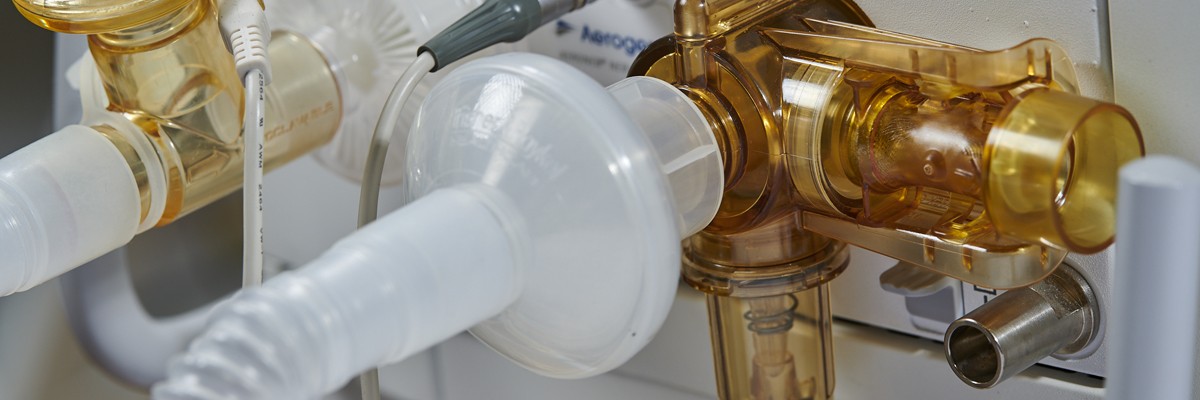Most hospital departments' annual budget in healthcare is determined by the previous year's budget—meaning a department that fails to empty its allotted coffer by the end of the year may see a decrease in available funds for the next year.
The end of the year (EOY) is the best time to stock up on clinical accessories that departments and hospitals will always need. So when the end of a budgeting year approaches, materials managers may need to act quickly to use up their remaining budget so they can maintain the ideal level of funding for their department. Here are four tips on how to get the most for your healthcare budget.
Prepare for a COVID-19 Surge by Stocking Up Now
As the COVID-19 pandemic continues and new variants are detected across the country, hospitals might consider using their EOY operating budget to stock up on accessories that tend to get used up quickly in a surge. These items include:
- Personal protective equipment (PPE) such as gloves, face masks, face shields, and disposable scrubs
- SPO2 cables and sensors
- Water traps
- Ventilator accessories such as exhalation valves and filters
COVID-19 has intensified the processes in place to keep hospital employees and patients safe; infection control—and the clinical accessories that play a role in preventing infections—are worth keeping top of mind across the board.
Switch to Disposable Accessories
The shift toward disposable medical supplies and single-use medical devices predates COVID-19, but the pandemic sped up the trend's momentum. Although purchasing disposable or single-patient-use medical accessories may come at a higher initial cost than purchasing reusable accessories, it can reduce the costs of reprocessing and intensive cleaning protocols needed for reusable supplies.
Infection Control Today1 describes a recent survey of sterilization and infection-control practices and costs with a small sample size of 100 respondents. Seventy percent of respondents worked in a "facility with a recycling program for OR-consumed disposables." When asked how long it took to clean, process, and sterilize an instrument set at their facility, 51% of respondents said more than 90 minutes, 32% said 61 to 90 minutes, and 10% said 31 to 60 minutes. Most disturbingly, the majority had seen evidence of inadequate processing or sterilization—89% reported seeing material residue on cannulated implants or instruments.
As the responses suggest, reusable healthcare accessories carry a greater degree of risk for cross-contamination, surgical site infections, and healthcare-associated infections compared with single-use supplies. Disposable and single-use supplies are sterile right out of their packaging, reducing the risk of infection for patients and staff.
Now is a good time to take any leftover funds from an EOY budget to shift more clinical accessories from reusable tools to disposable. Consider replacing reusable items that require too much staff time to reprocess and repair with disposable items that are safer for the entire hospital.
Invest in High-Quality Clinical Accessories
High-quality clinical accessories are a smart choice for maintaining on-site medical machinery. When you purchase accessories from an OEM, they are best positioned to support the primary product and offer the accessories designed to enhance it.
Aftermarket or generic suppliers do not have to go through the same regulatory pathways2 as OEM supplies. An OEM accessory is also designed to pair perfectly with the base product, as they were created by the same company. This makes it easy to feel confident that the purchase will be accurate, reliable, and safe.
OEM accessories may be more expensive than generic items, but they are a better investment in the long run: third-party items may need to be repaired or replaced more frequently, costing the hospital more money later on.
Maximize Every Healthcare Budget Dollar
Using an entire budget in healthcare by the end of the year may seem like a daunting task, but hospital departments can make it easier by looking beyond big-ticket items. Clinical accessories are integral to hospital operations—and they can go a long way toward ensuring that every dollar is spent well, helping to secure crucial funding for the coming year.
- https://www.infectioncontroltoday.com/view/clinical-and-economic-case-sterile-disposable-instruments-and-implants
- https://www.advamed.org/wp-content/uploads/2020/09/how-oems-meet-highest-standards-for-servicing-medical-devices.pdf
Disclaimer: Commercial availability of GE Healthcare medical systems is subject to meeting local requirements in a given country or region. Contact a GE Healthcare Representative for more information.





